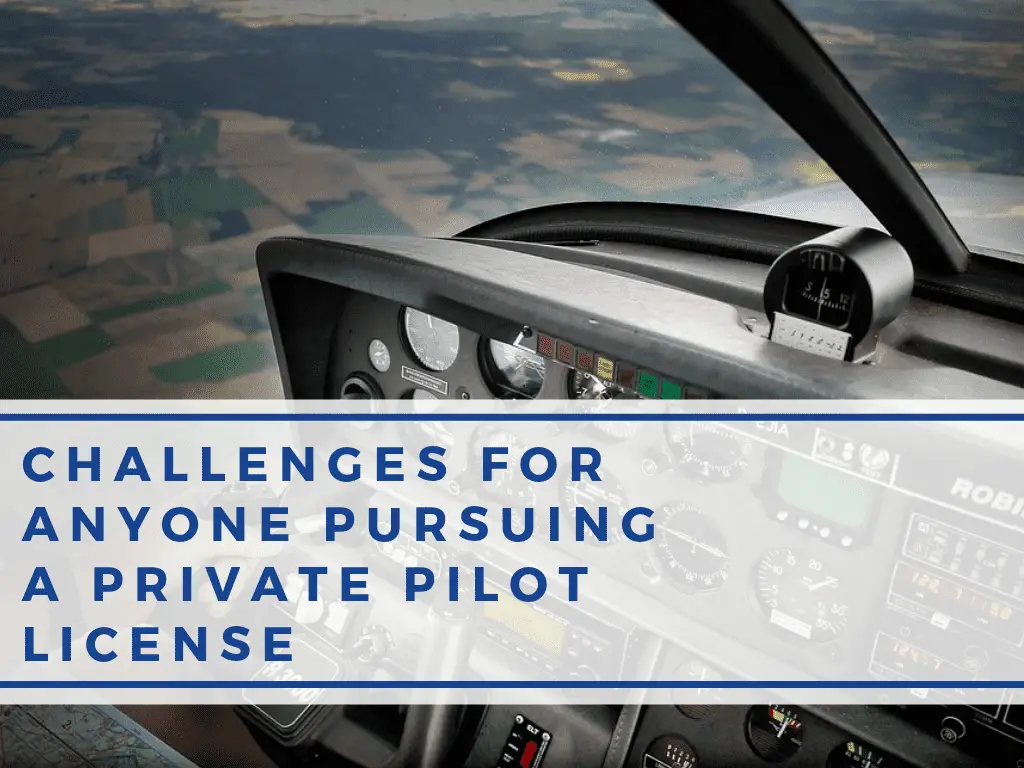Table of Contents
*This post may contain affiliate links. As an Amazon Associate we earn from qualifying purchases.
Every career field has its challenges. The training requirements, certification costs, and necessary experience needs all serve as obstacles that must be overcome by the trainee.
Some people prefer to look at these obstacles as opportunities, but there’s still no denying that some career fields are very challenging to get into. This can be due to the amount of training required in the field, the liability employees face on the job, or a combination of the two.
Pilots are the type of workers that are expected to work well under tough conditions, react to last-minute changes comfortably, and put safety as their utmost priority every time they get on the clock.
Getting a private pilot license requires a person to dedicate themselves to a proper flight curriculum at an accredited school, and to gain the necessary experience they need behind the controls.
There are a few main concerns most people have when it comes to proceeding with this training.
How much does it cost? How long does it last?
What should be expected in the training program?
All of these are concerns a person must have when they’re looking to get their private pilots license.
Analyzing the Private Pilot License Cost
When pursuing a new career field, one of the main concerns anyone has is the cost of training.
Higher education and job-specific programs all have their own price tag, and learning how to manage it is key for getting started and graduating with financial stability.
Acquiring a private pilot license requires a person to train with an instructor in a full curriculum. This introduces them to the controls of the plane, gets them used to flying under the supervision of a trained professional, and helps them adjust to the unforeseen obstacles they may encounter on the job.
The cost of flying lessons may vary depending on the institution, but most schools will advertise their rates in an upfront manner on their website. This helps students understand the costs and how they can manage them.
Some institutions offer financial assistance or discounts in certain cases, making it a little easier to offset the costs of pursuing a new career in the field of aviation.
The next concern most people have deals with how long it will take them to complete the course.
Course Length Can Vary Depending on the School
Some schools boast the ability to train a private pilot in a shorter timeframe than their competitors in the field.
While some people may prefer a concise curriculum, others may opt for the longer option as it could mean getting more out of it and coming away with more knowledge.
Some aviation schools offer guidance on how to get a private pilot’s license through their own flight-school program. Others can help aspiring pilots find schools with the courses they need, as many of these aviation academies work with networks of partner organizations to help benefit the industry as a whole.
Aviation programs can involve engineering, maintenance, and development of new technology in addition to flight courses. Some people may prefer to make their living flying planes, while others would prefer to work on them and develop newer models that can achieve better performance in the skies.
One of the biggest challenges for anyone pursuing a license or degree in aviation is sticking with the programs all the way through.
These programs can be lengthy, and present many tough challenges for newcomers. Being able to persevere is an important trait, especially since pilots must also be able to handle lengthy and arduous challenges while they’re on the job.
New Pilots May Take Time to Adjust
Flying a plane is no easy task.
Despite the fact that airline pilots can make a good living and many people dream of working this job, not everyone is able to handle the stress that comes with it.
Pilots are responsible for the safety of many people every time they get behind the controls. This means handling the anxiety that can follow is one of the most challenging parts of the job.
One of the ways training programs work to remedy this is by having a pilot start out flying under the guidance of a professional. This allows them to get hands-on experience while having help nearby if they need it.
The challenges pilots face on the job can vary depending on the situation.
Sometimes the trip may become delayed or get turbulent due to weather or mechanical problems. This may force pilots to make quick decisions and react with little time to prepare.
These are just a few of the challenging aspects of a pilot’s job, and they will also be faced by anyone looking to get their pilot’s license.
But for those who can manage the costs, studies, and stress, the rewards of a thriving flight career may make it all worthwhile.

